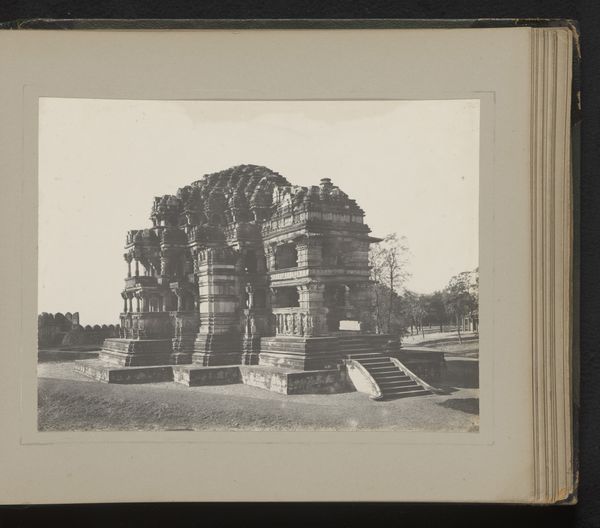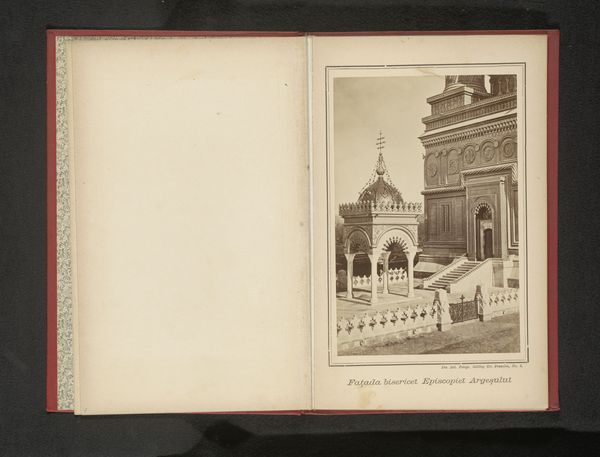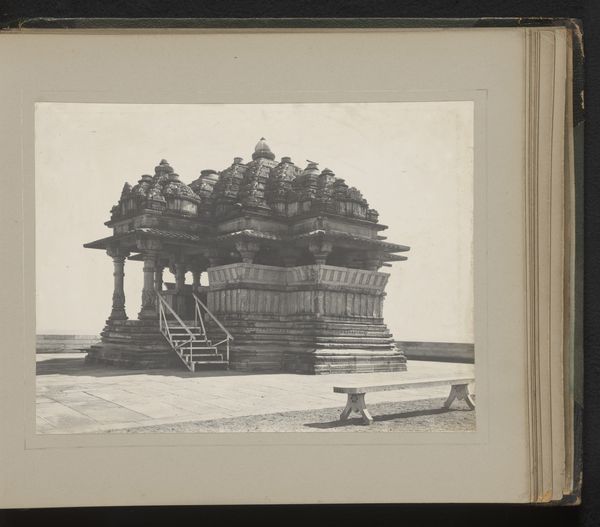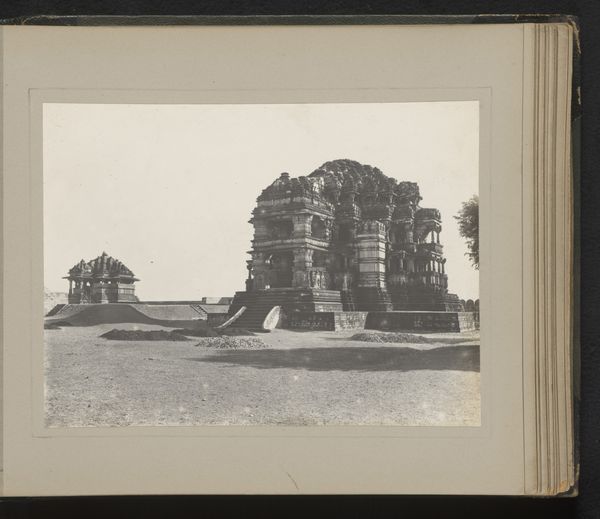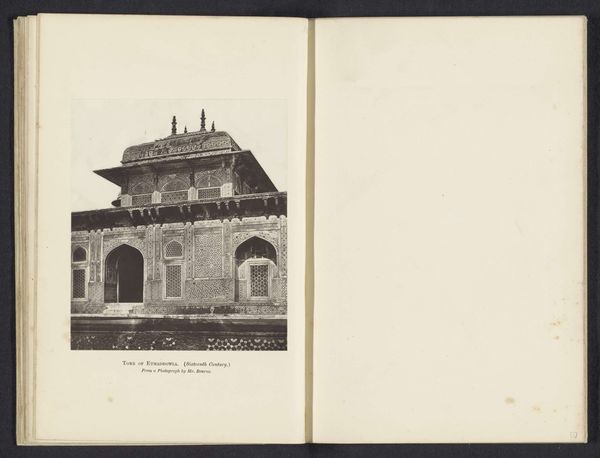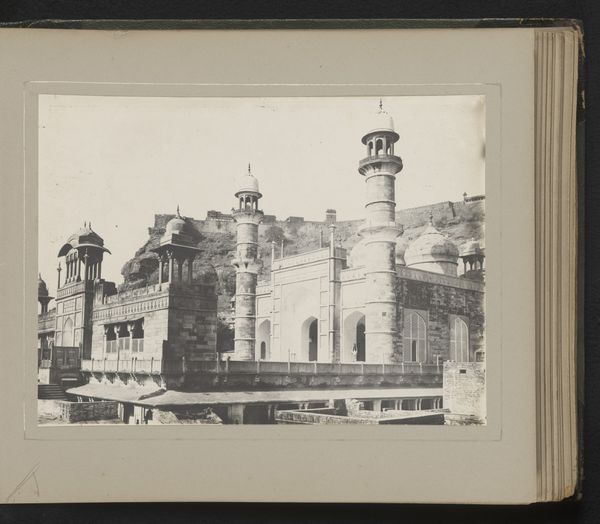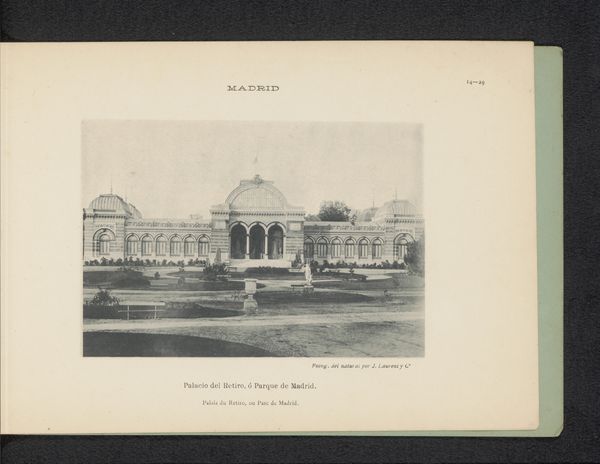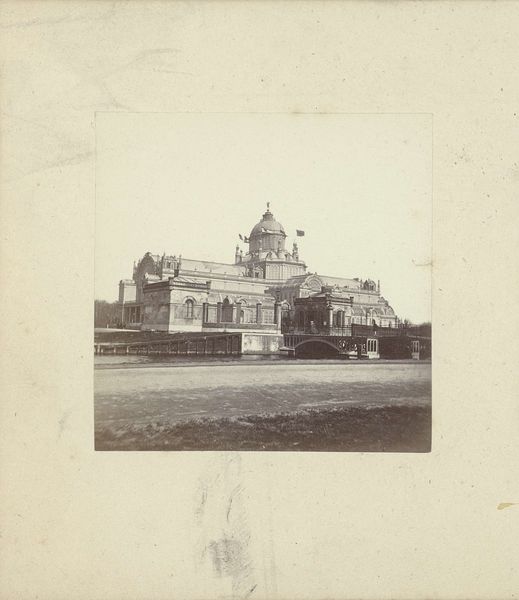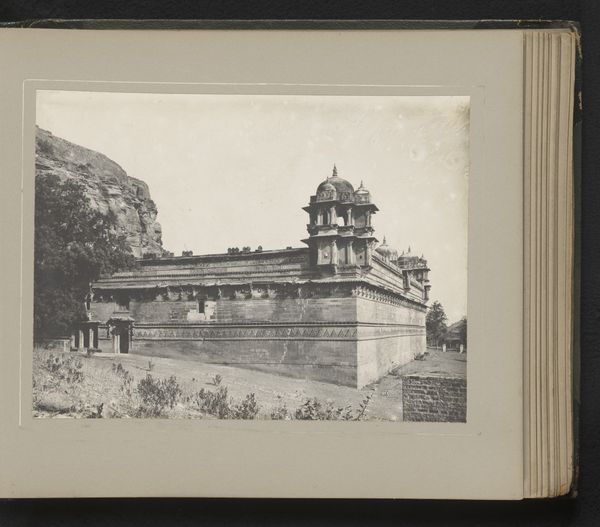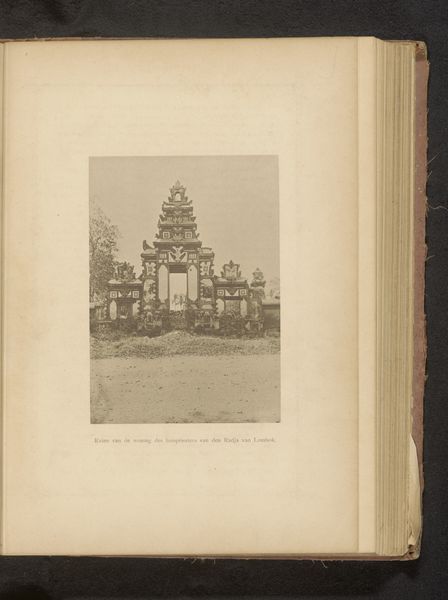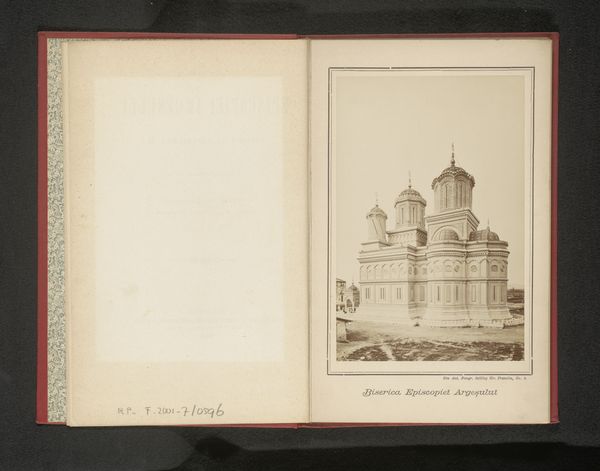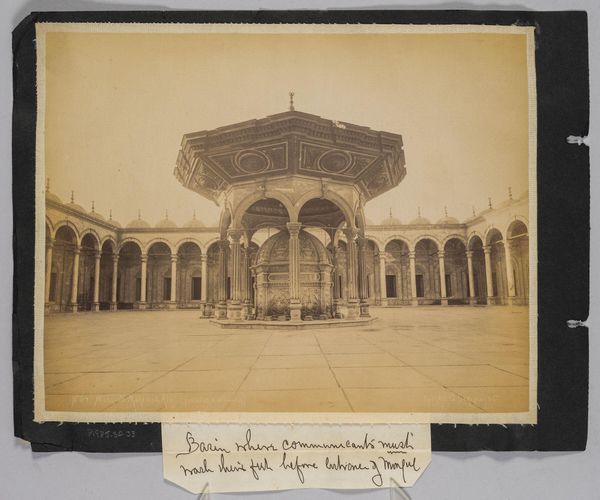
photography, albumen-print
#
landscape
#
photography
#
orientalism
#
cityscape
#
islamic-art
#
albumen-print
Dimensions: height 158 mm, width 207 mm
Copyright: Rijks Museum: Open Domain
K.H. Mawal captured this image of the Tomb of Muhammad Ghawth with photography, a relatively new medium at the time. This image presents us with more than just the architectural details of the tomb; it offers a glimpse into the colonial gaze and the codification of Indian heritage. The photograph, likely taken during the British colonial period, participates in the documentation and, arguably, the appropriation of Indian culture. The tomb, a monument to a 16th-century Sufi saint, becomes an object of study and record. We see how photography served the interests of colonial administration and scholarship. It raises questions about who has the authority to represent history and whose perspectives are privileged in these representations. The dry, almost clinical, approach to the image prompts us to ask about the power dynamics inherent in the act of photographing and archiving cultural monuments. Delving into the archives, we can uncover the complex interplay between colonial projects, photography, and the construction of cultural memory.
Comments
No comments
Be the first to comment and join the conversation on the ultimate creative platform.
